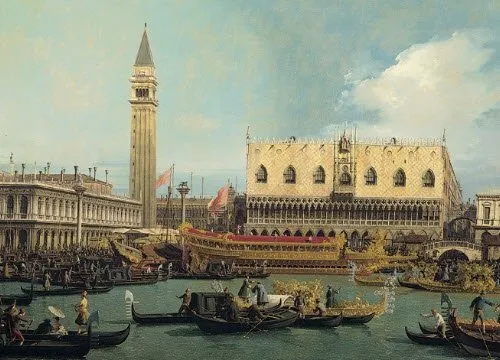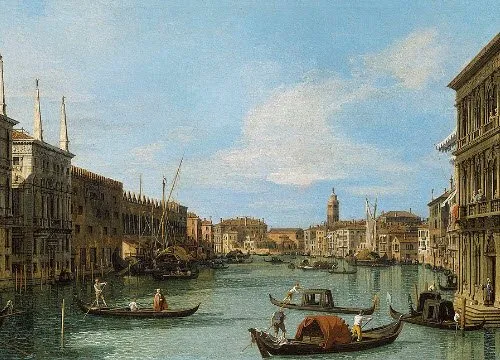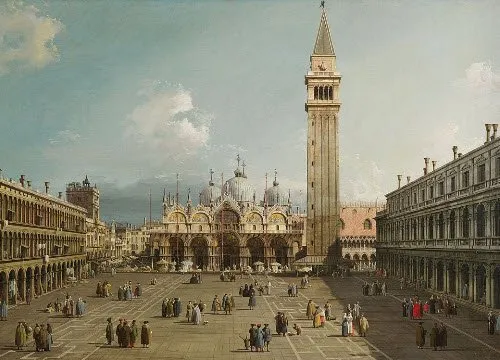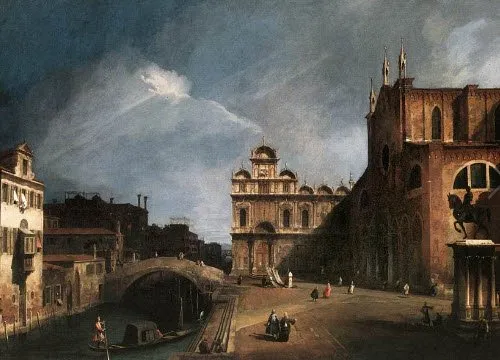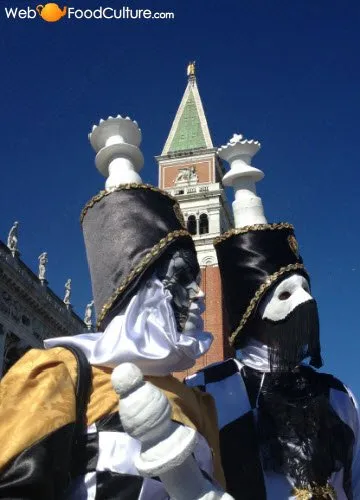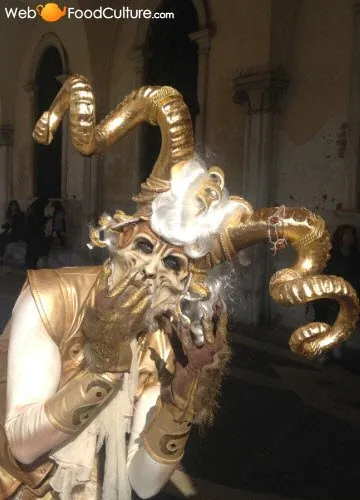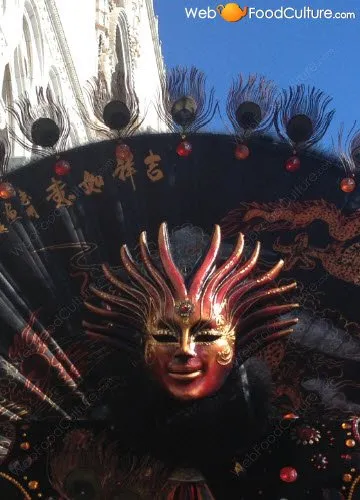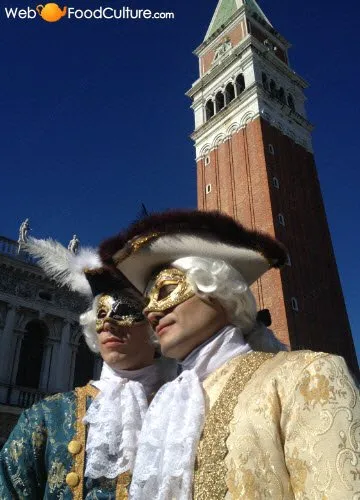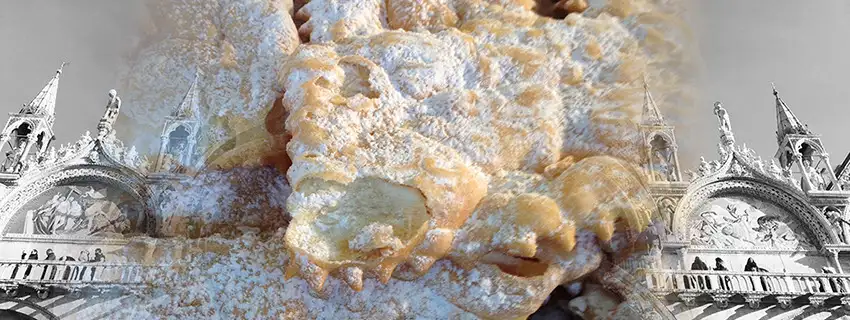Published:
Author: Antonio Maria Guerra
Venetian Frittelle

The Carnival in the city of Venice: an event unique in the world, renewing its magic year after year. During the period of its celebrations, all the pastry chefs of the Doge’s city make delicious ‘Venetian Frittelle’: let’s taste these sweet specialties, let’s find out treir history and secrets.

History of the Venetian Frittelle.
It’s almost impossible to establish with certainty the date of birth of the ‘frittella’. As often happens when dealing with a typical Italian specialty, some experts trace its origins back to ancient Rome (*1). 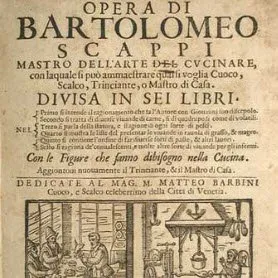 It seems there is a document of the Fourteenth Century (*2) describing a kind of pastry quite similar.
It seems there is a document of the Fourteenth Century (*2) describing a kind of pastry quite similar.
One of the first evidences dates back to the Renaissance and is contained in a cooking treatise (*3) by Bartolomeo Scappi, ‘master in the art of cooking’ (‘maestro nell’arte del cucinare’) and personal chef of the Popes Pius IV and Pius V. In this monumental work, Scappi illustrates the recipes of different types of ‘Frittelle’, both sweet and savory, including the ‘frittella alla venetiana’ (the ‘Venetian frittella’).
This delicacy reached the moment of its greatest success during the Eighteenth Century in the Serenissima Republic (*4), where it was considered the ‘national dessert’.
At that time, the ‘fritole’ or ‘fritoe’, dialect names for the ‘Frittelle’, were prepared by the ‘fritoleri’.
Notes:
*1: These experts refer to the ‘globulos’, prepared during the Roman festivity known as ‘Saturnalia’. The ‘globulos’ are described in detail in another paragraph of this article;
*2: Even if this document is quoted very often, its existence is not proven. Many suggest it’s stored in the Casanatense Library of Rome;
*3: ‘Opera di M. Bartolomeo Scappi, cvuoco secreto di Papa Pio V’, 1570;
*4: The Republic of Venice;
Venice, the birthplace of Frittelle.
Venice, the homeland of Frittelle, is located in the Italian Region of Veneto. Its foundation dates back to 421 AD, as testified by the archaeological excavations at Riva Alta (the current Rialto area).

‘Globulos’, the ancestors of Frittelle.
‘Globulos’ are often considered the true ancestors of the ‘frittelle’.
Read more
They were prepared in ancient Rome during the celebration of the ‘Saturnalia’ (*1), mixing together durum wheat flour and cheese. This dough was used to make little balls, which were then fried in lard and seasoned with honey and and poppy seeds. It’s possible to find an accurate description of the recipe in the ‘De Agri culture’, one of the works by Marco Porcio Catone, famous Roman general, intellectual and politician.
Note:
*1: Celebration held in the (current) month of December, in honor of the god Saturn.

The ingredients of Venetian frittelle.
Although there is no official specification indicating the exact ingredients of the most classic Venetian Frittelle, it’s easy to identify those generally used for the preparation of the exquisite specialty.
- Flour 00;
- Milk;
- Eggs;
- Water;
- Yeast;
- Raisin;
- Pine nuts;
- Grappa;
- Grated lemon peel;
- Granulated sugar;
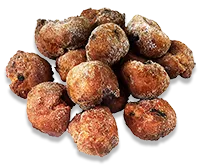

Where to eat the original Frittelle?
Here follows a short list of some of the most traditional pastry shops in Venice making the original Frittelle.
Read more
- Pasticceria Rizzardini
Sestiere San Polo 1415 Campiello dei Meloni – 30125 Venice – Italy
Tel. : +39 041 522 3835 - Pasticceria Rosa Salva
San Marco 950 – 30124 Venice – Italy
Tel. : +39 041 521 0544
Web: www.rosasalva.it
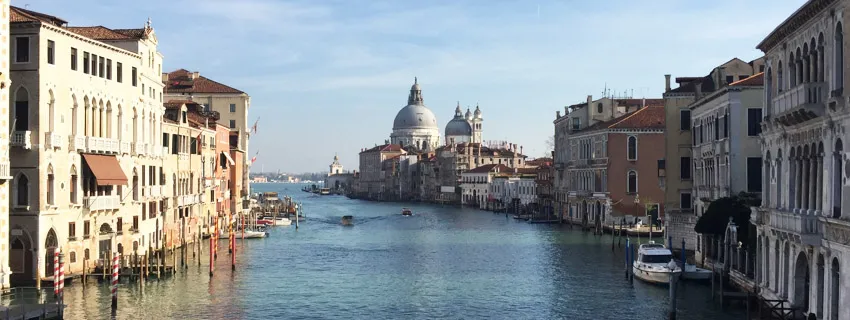

‘Fritoleri’: the ancient makers of Venetian Frittelle.
The ‘Fritoleri’ were the Venetian artisans who, many years ago, prepared and sold the ‘Frittelle’. They were very interesting people, easily recognizable for the large white apron 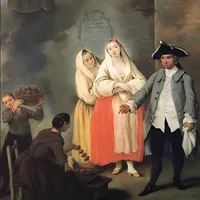 they wore and for the small jar full of sugar (*1) they waved with colorful gestures to attract the attention of passersby.
they wore and for the small jar full of sugar (*1) they waved with colorful gestures to attract the attention of passersby.
Their ‘office’ was, in fact, the street: some of them were peddlers, some others, the wealthiest, had rectangular shacks, housing the ‘tools of trade’, including great wooden tables and large pans. The front of these ‘shops’, was intended to display the exquisite preparations. Once ready, the ‘fritole’ were carefully placed on elaborately decorated metal plates (*2), surrounded by their ingredients (*3). The meaning of such a presentation was to lure potential customers showing the quality of the product.
The ‘fritoleri’ were very proud of their work, so much to exhibit their names using a sign. In 1619, to protect their art (and interests), they established a proper corporation: this way, each of the 70 members received the exclusive right to work in a specific area and to hand down the profession (including its prerogatives) to his children. The corporation was so successful to stay in business for over two hundred years (*4).
The ‘fritoleri’ became so famous that they were celebrated by many artists.
Notes:
*1: The use of sugar by the fritoleri is a quite important topic, deepened in a specific paragraph of this article.
*2: Information acquired from the book ‘Scene di Venezia : Municipali suoi costumi’ by Pietro Gasparo Moro (1841).
*3: These ingredients were (mainly): flour, eggs, pine nuts, raisins and candied citron.
*4: Until the end of the 19th century.
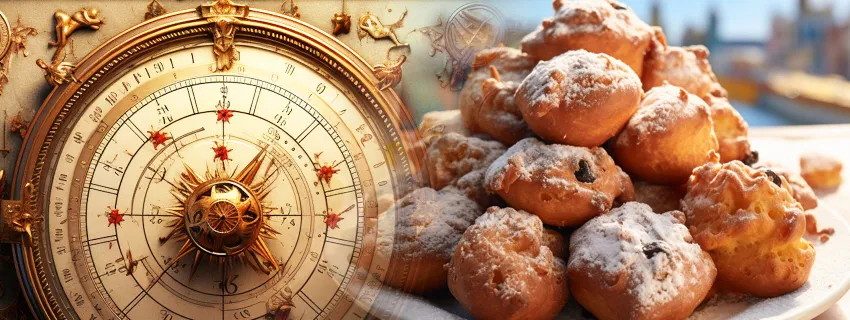
When are Frittelle sold?
In the city of Venice, Frittelle should be sold, at least theoretically, starting from the day after Epiphany, until Mardi Gras. It’s more a habit than a rule, part of an ancient tradition, nowadays frequently disregarded.

Venetian Frittelle ... with the hole.
Or, as the Venetians would say, “e fritoe col buso”. A famous painting of the Eighteenth Century by Pietro Longhi, the ‘Frittelle vendor’, shows a peddler preparing these pastries and selling them to a rich nobleman accompanied by two ladies.
Read more
It’s interesting to note that the ‘fritole’ are cooked and served on a spit (*1): this is used to ensure better cooking and to avoid getting hands dirty when tasting them. Nowadays, just a couple of Venetian pastry shops make the ‘fritole’ this way.
*1: The spit probably consisted of a thin bamboo cane.
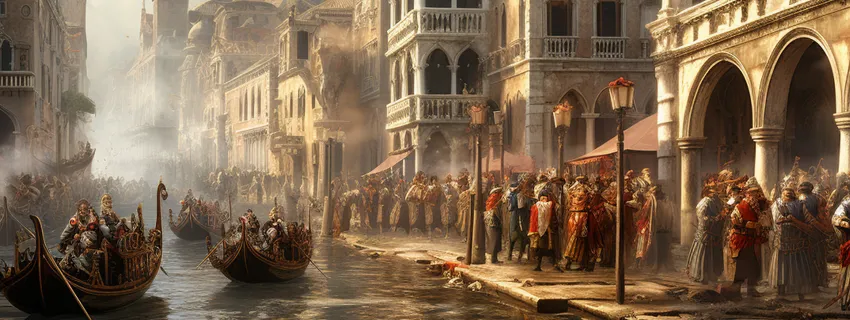

Sugar for Venetian Frittelle.
As already mentioned in another paragraph of this article, one of the details that made the ‘fritoleri’, the ‘artists of the fritola’, easily recognizable, was the casual use of a small jar to spread sugar 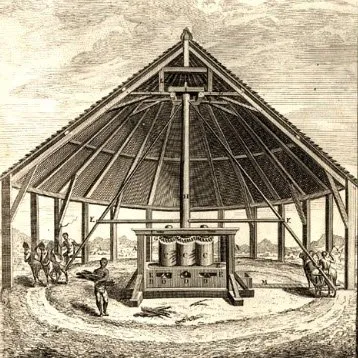 on their exquisite preparations. Such ease, although nowadays may seem quite common, once was not so normal: for many centuries sugar was considered a rare commodity. A precious spice, since it had to be imported from very distant lands and, for this reason, it was used as a sweetener only by the wealthy classes. Common people had to settle for honey, being careful not to use too much of it.
on their exquisite preparations. Such ease, although nowadays may seem quite common, once was not so normal: for many centuries sugar was considered a rare commodity. A precious spice, since it had to be imported from very distant lands and, for this reason, it was used as a sweetener only by the wealthy classes. Common people had to settle for honey, being careful not to use too much of it.
In such a context, the Republic of Venice, especially during the period of its greatest expansion, represented an exception: thanks to its vast commercial network, the ‘Serenissima’ could count on (relatively) cheap supplies of sugar. The great part of it came from the colonies: among them, the island of Crete, at the time known as ‘Candia’ (*1).
It’s therefore no coincidence that one of the oldest and richest confectionery traditions of Europe was born in Venice. The ‘fritole’ can be undoubtedly considered an example of this tradition.
Notes:
*1: The sugar known as ‘candioto’ (because it was produced in Candia), was used to make the ‘candii’, what we know today as ‘candied fruit’.

‘Malvasia’ wines for Venetian Frittelle.
In the city of Venice, as in the rest of Europe, starting from the Middle Ages and for many centuries after, the ‘Malvasia’ or, better said, the ‘Malvasie’, were considered among the finest wines (*1).
Read more
The plural (*2) has a reason since, at that time, the name was used for many wine varieties: they had in common to be sweet and aromatic (*4) and to come from lands overlooking the Eastern Mediterranean (*3).
Having good acidity, the ‘Malvasie’ were, and still are, the right choice to accompany sweet specialties like ‘fritole’ and galani.
Notes:
*1: The Venetian nobles used to taste these wines in small shops, not surprisingly known as ‘malvasie’: the true ancestors of today’s wine houses;
*2: In Italian, ‘Malvasie’ is the plural of ‘Malvasia’;
*3: ‘Malvasia’ probably derives from ‘Monemvasia’, the name of a Greek city in the Peloponnese, located on an island for a long time under the control of the Serenissima.
*4: In truth, not all types of Malvasia were sweet: there was at least one quite dry, at the time known as ‘garba’;

The etymology of the word ‘Carnival’.
There are several theories about the origins of the word ‘Carnival’ (in Italian, ‘carnevale’).
read more
According to the most accredited one, it could derive from the fusion of two Latin terms: ‘carnem’ (‘meat’) and ‘levare’ (‘remove’), with reference to the habit of starting a period of abstinence from meat immediately after ‘Mardi Gras’ (‘Martedì Grasso’), the closing day of the festivity.

The Venetian Carnival.
‘Carnival’ has its roots in a distant past: some experts trace its origins back to ancient times, even before the Roman ‘Saturnali’ and the Greek ‘Dionysiache’, events very similar to this festivity under many aspects. What all these celebrations have in common is a spirit of renewal, getting new life at the beginning of each year: this results in a temporary suspension of rules in favor of chaos, considered the strongest force of creation.
A sort of ‘beneficial disorder’, main character in the theatrical representation that is the true essence of Carnival, allowing transgressions usually forbidden and a momentary subversion of the social order, thanks to which, for a few days, the poor are allowed to disguise as the rich and vice versa (*1).
Read more
It’s easy to understand why masks play a fundamental role in this great game.
Those made in Venice are among the most beautiful: a true form of art, blending culture, imagination and colors, thanks to the virtuosity of skilled craftsmen.
Carnival has been celebrated in the city since 1094 (*2): a city famous worldwide for the beauty of its places, for its scents and its flavors. Perfumes and flavors that can be found, for example, in particular pastry specialties, prepared only during this festivity: ‘Frittelle’ (‘Fritole’ or ‘Fritoe’) and ‘Galani’.
Notes:
*1: The special freedom granted to the people (anyway subject to strict monitoring), had the great advantage to be a sort of ‘safety valve’ for social tensions.
*2: The first document containing a reference to the Venetian Carnival, dates back to the year 1094 and was written by the famous Doge Vitale Falier.
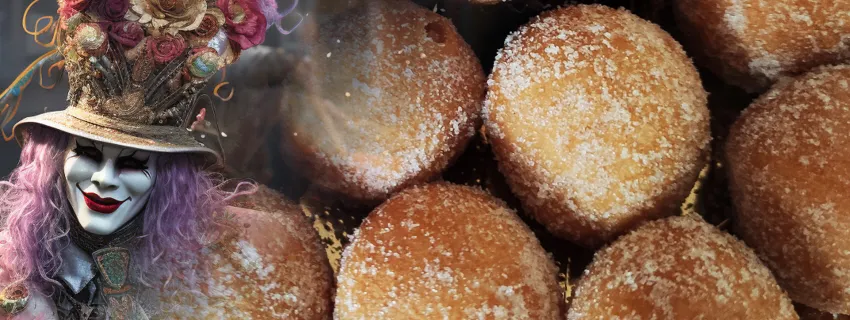
Castagnole: the 'cousins' of Frittelle.
Speaking about the typical Venetian carnival desserts, it’s important to mention the ‘castagnole’ (*1). Being smaller in size, they can be considered, in a way, the ‘little sisters’ of the fritole (*2).
Read more
They are prepared using a mixture of flour, eggs, butter and sugar (*3). The dough is cut in pieces, used to make tiny balls: these are fried in oil (*4) and garnished with sugar.
Notes:
*1: They are also known as ‘fave’ or ‘favette’;
*2: The ‘castagnole’ have also greater consistency than the ‘fritole’;
*3: They have generally no filling;
*4: There is a variant, more dietetic but less tasty, cooked in the oven;
There is no doubt that Galani, together with Frittelle, are the most typical desserts of the Venetian carnival. We have dedicated an article to this exquisite dessert: you can read it by clicking on this LINK.
Copyright information.
The images displayed in this page belong to WebFoodCulture, with the exception of:
Public Domain images
- ‘Opera di Bartolomeo Scappi …’, B.Scappi, XVII sec. (Wikipedia Link) {PD-Art} {PD-US}
- ‘Venditrice di frittelle’, Pietro Longhi, 1757 (Wikipedia Link) {PD-Art} {PD-US}
- Sugar mill, XVIII sec. (Wikipedia Link) {PD-Art} {PD-US}
- ‘Santi Giovanni e Paolo e la Scuola di S.Marco’, Canaletto, 1726 (Wikipedia Link) {PD-Art} {PD-US}
- ‘S. Geremia e l’ingresso di Cannaregio’, Canaletto, 1727 (Wikipedia Link) {PD-Art} {PD-US}
- ‘Piazza San Marco’, Canaletto, 1730/34 (Wikipedia Link) {PD-Art} {PD-US}
- ‘Il Bucintoro attraccato nel giorno dell’Ascensione’, Canaletto, 1740 (Wikipedia Link) {PD-Art} {PD-US}

